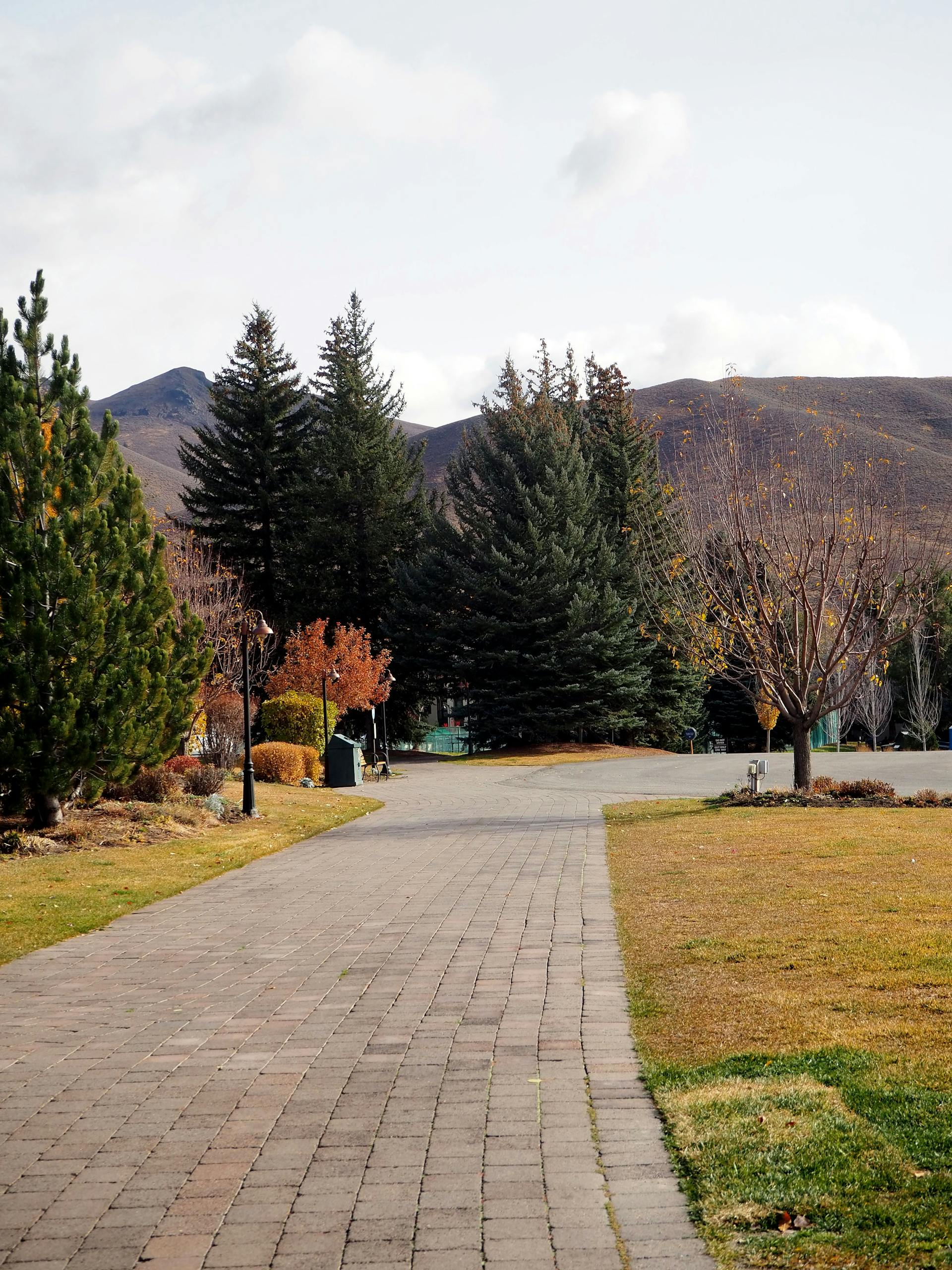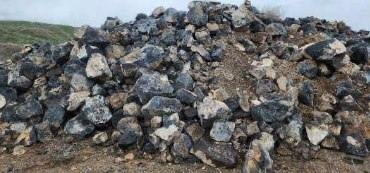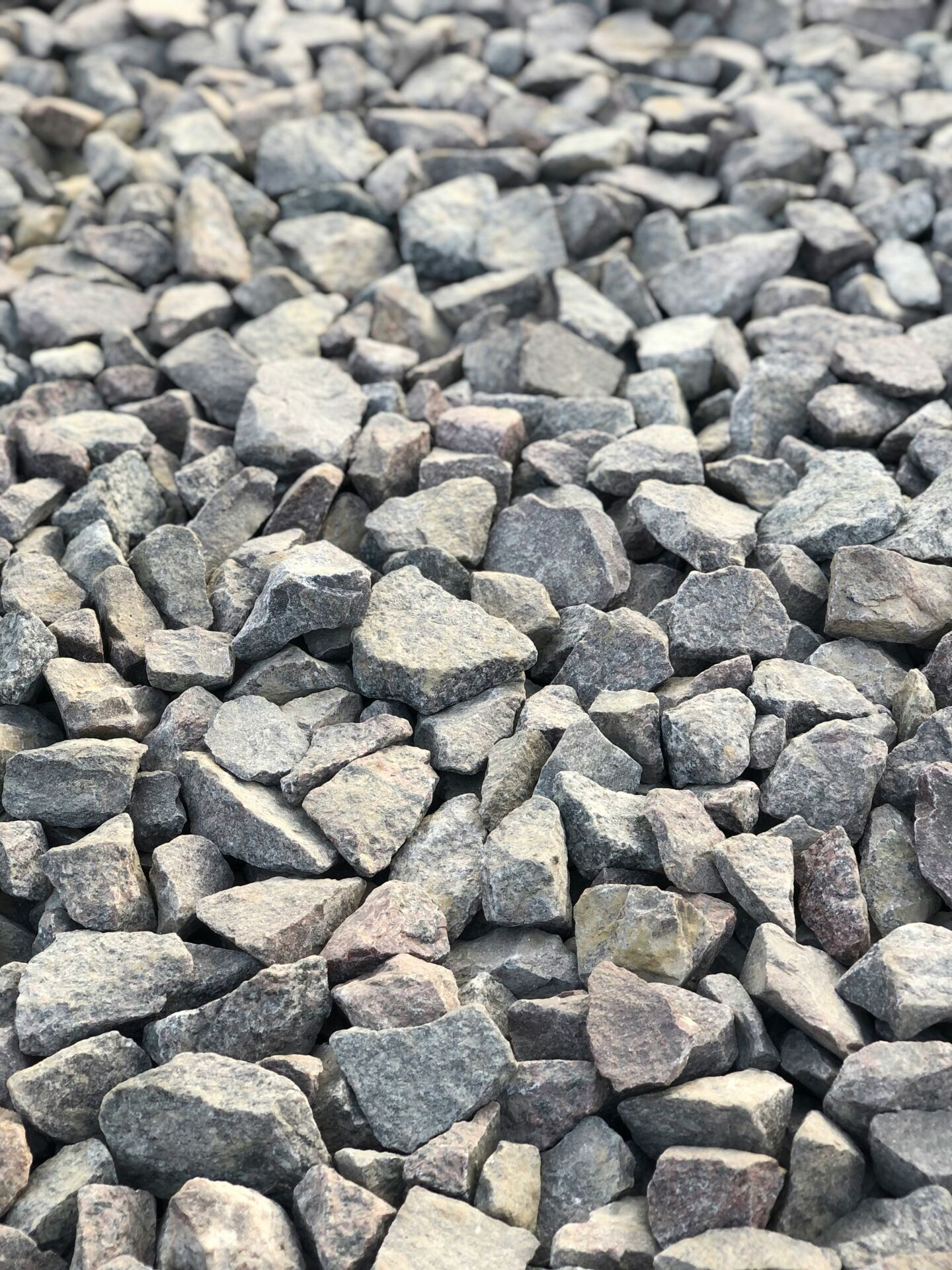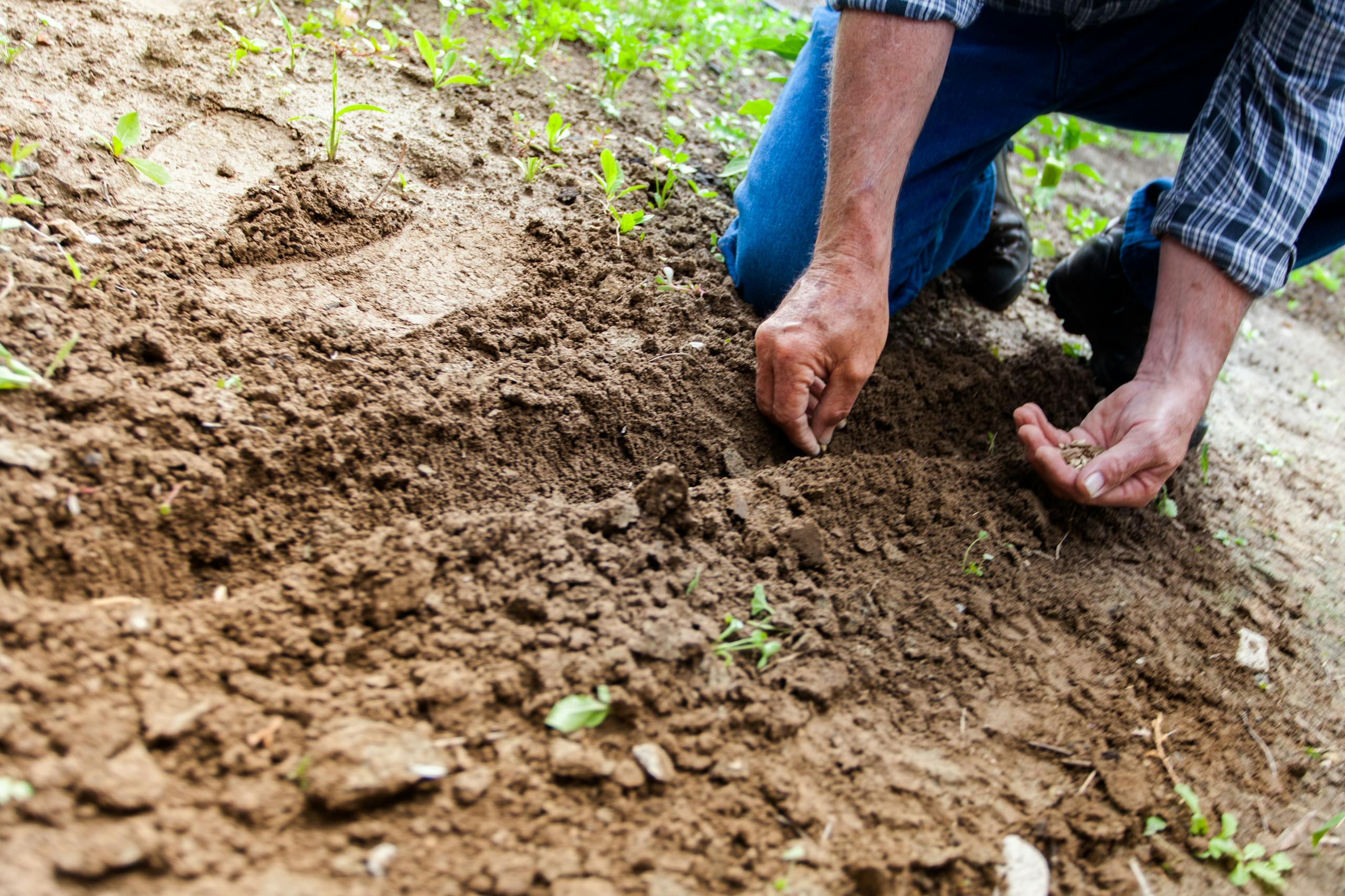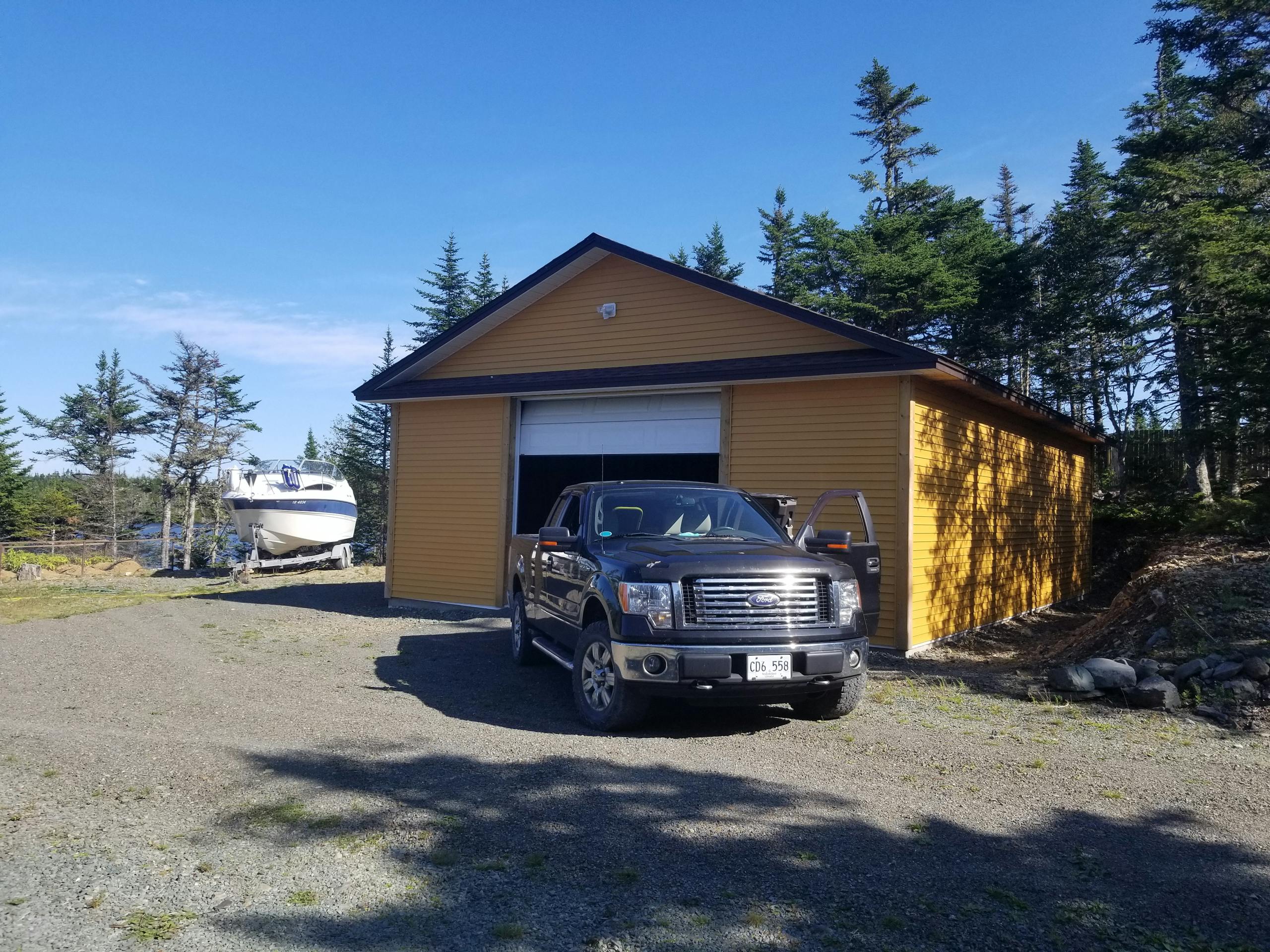How Commercial Properties Can Prepare for Summer with Soil and Rock Improvements
As spring unfolds, commercial property managers are gearing up for the busy summer season – which means making sure the grounds are…
As spring unfolds, commercial property managers are gearing up for the busy summer season – which means making sure the grounds are not just presentable, but also optimized for function and low maintenance. Two often overlooked aspects of exterior prep are soil and rock improvements. By enhancing soil in landscaped areas and fixing up gravel/rock features, a commercial property can greatly improve its curb appeal, safety, and even environmental footprint. In this article, we’ll explore several projects that leverage soil and rock to get your property ready for summer: from revitalizing flower beds with fresh topsoil and Soil Pep, to re-grading rock drainage swales, refreshing gravel pathways and parking areas, and using structural fill to solve any grading issues left from winter. These tips are especially useful in mountainous or high altitude regions where spring runoff and winter damage can leave properties in need of a little extra love.
1. Refresh and Replenish Landscape Soil
Healthy soil = healthy plants = attractive property. After winter, planting beds and lawn areas can be compacted, nutrient-depleted, or eroded.
Tasks:
- Topsoil Top-Up: If you notice areas where soil has settled or plant beds that seem a bit low (roots exposed, etc.), add some quality topsoil. Focus on foundation plantings along building fronts, islands in parking lots, and any places where new plantings will go. Use locally sourced Screened Topsoil for a rock-free, easy to spread medi8】. For example, if a lawn section by the entry has depressions, fill them with topsoil and then overseed. If a planter bed is sunken, add an inch or two across and gently work it in around existing plants (taking care not to bury stems too deeply against them).
- Soil Amendment: Improve soil structure and nutrients by incorporating organic matter. A great material for this in our region is Soil Pep or compo7】. Soil Pep is basically fine wood mulch/compost that can be mixed into existing soil or used as a top-dress. Rake a thin layer (0.5-1″) into flower beds – it will both mulch and slowly feed the soil. If replanting annual flower beds for summer, till in a healthy amount of compost or Soil Pep now so your summer flowers thrive (Martha Stewart would approve!).
- Mulch Renewal: This isn’t exactly soil, but closely related. If you have bark or wood chip mulch in beds, spring is the time to fluff it up and add more if thin. A fresh layer of mulch (2-3″) after cleaning beds does wonders for looks and moisture retention. Use local bark or wood chips if available (sometimes sawmills or pits have aged wood mulch at good rates). Ensure mulched areas have a defined border so mulch doesn’t migrate onto walkways (add stone edging or a trench edge as needed).
- Fertilize Lawns and Plants: Beyond physical soil improvements, consider a spring feeding. Lawns may benefit from a balanced fertilizer or an organic top-dress like compost tea. Shrubs and trees could get some slow-release fertilizer spikes or granular food. Good nutrition helps them recover from winter and put on a nice show in summer. If you prefer organic, bone meal and blood meal can be lightly worked into soil around ornamentals.
Healthy soil not only supports plant growth but also helps with stormwater management (absorbent soils reduce runoff). It also signals to tenants/guests that the property is well cared for. Nothing says neglect like rock-hard, barren soil with struggling plants – conversely, rich dark soil with vigorous greenery says “welcome.”
2. Repair and Improve Gravel Areas (Paths, Parking, Entries)
Many commercial properties have gravel elements: maybe a side access road, a utility area, or decorative gravel bands in the landscaping. After winter, these often need attention:
- Gravel Pathways: Remove any weeds or encroaching grass (use a hoe or herbicide as needed). Rake the gravel to even it out. Fill low sections with new gravel. If the path has become too thin (seeing dirt or fabric underneath), add a top-up of matching gravel. A pro tip is to add a little fresh gravel each spring to high-traffic gravel paths to keep them level and weed-resistant. Ensure the path edges are neat – you can install metal or plastic edging if gravel tends to scatter into lawns or beds.
- Parking Lots or Drives: (We covered this extensively in the previous article.) For commercial settings, definitely fix potholes and ruts promptly in spring. Schedule a re-grading and fill as need9】. Safety is key: no one wants a customer tripping in a pothole or a car damaged. Once patched and graded, consider if you need more substantial changes: do you need to add a geogrid in chronic sinking areas? Or improve drainage by adding a French drain along a low edge? Implement those now with structural fill and rock before summer storms. Also, re-paint any parking lines on stabilized gravel if you use a striping method (some lots have paint on stabilized fine gravel or on timbers marking each space).
- Decorative Rock Beds: Sometimes properties use rock instead of mulch in areas (river rock around sign bases, lava rock in modern plant beds, etc.). Over time, soil can accumulate on top from dust and allow weeds to grow, and rocks can get discolored. Spring clean them: use a blower or gentle pressure wash to clean the rocks. Pull any weeds (lay fresh landscape fabric and add more rock if weeds were rampant, meaning coverage was poor). If the rock layer is thin or bare spots show, add more stones (match color/size). E.g., if you have a beautiful river rock dry stream as a landscape feature, add a few wheelbarrows of similar stones to refresh it – over years some sink or get scattered; a spring top-up keeps it looking crisp.
- Drainage Swales and Rock Trenches: Many commercial sites have rock-filled drainage channels or French drains (perhaps a trench of 2-3” crushed rock along the parking lot edge leading to a basin). Check these after snowmelt: they often clog with sediment or leaves. Excavate any sediment and dispose. If the rocks are very dirty, you could remove and wash them, but usually replacing with new clean rock is easier if it’s a small area. Ensure geotextile underlayment is still in place and not exposed (cover with stone if it is). These drainage features are vital to prevent lot flooding; restoring their permeability in spring prevents headaches later. If you notice water bypassing or eroding next to them, add more rock or extend the swale as needed.
- Retaining Walls and Rock Edges: While on the rock theme, inspect any rock retaining walls or riprap slopes. Frost can loosen stones. Reposition any displaced rocks and backfill voids with soil or gravel. If a section bowed out or collapsed, hire a contractor or rebuild it properly before it fails further (spring is a good time for this type of repair as the soil is soft and plants haven’t fully grown in). A stable rock wall or slope prevents sudden failures (which could be dangerous and expensive mid-summer).
3. Re-Grading and Structural Fill for Problem Areas
Many commercial properties suffer from a few persistent grading issues: maybe water pools in that corner of the lot near the dumpster, or the delivery truck entrance has a dip that scrapes bumpers. Spring is ideal to fix these with some earthwork:
- Low Spots: Identify low-lying areas where water or ice sat during winter. Use structural fill (pit run or crushed gravel) to build them 5】. For instance, if the back door exit has a depression that iced over, add fill and re-pave or re-gravel to slope it away. If lawn areas have low spots, fill with topsoil (as mentioned in step 1 for soil), but if it’s an area where cars drive, use compactable gravel or fill dirt with a gravel topping.
- Settled Utility Trenches: Often, after a couple winters, where a utility line was buried sinks down. If you see a linear dip (maybe along where an outdoor lighting cable or irrigation line runs), spring is time to add fill. For trenches under grass, topsoil and re-seed. Under pavement or gravel, you’ll need to cut it open and add more structural fill, then patch the surface accordingly.
- Heaved Areas: Conversely, frost might heave up some spots (perhaps around edges or where water froze). These often settle back, but if not, rake/grade them down. If large heave (like a big hump in gravel drive), you may need to remove some fill. Check that no underlying issue (like a buried water line leak or tree root) is causing it.
- Use of Structural Fill vs Topsoil: General rule: if area will be paved or graveled, use structural fill (gravel) to grade. If it will be planted or lawn, use soil to topdress. Sometimes you do both: e.g., low spot on lawn 6” deep – first fill 4” with structural fill to firm up (if it’s a soggy area), then 2” topsoil and seed on top for grass. This prevents future sinkage if the low was due to poor subgrade.
- Slope Stabilization: If you have any slopes that border your property (like a berm or embankment along a parking lot) that show erosion from spring runoff, address it now. Add structural fill or rocks to re-shape and stabilize. Perhaps regrade the slope gentler and then plant groundcover or install erosion blanket. If space, adding a vegetated swale or terrace can catch runoff. This is important so that come summer thunderstorms, you don’t get surprise mud on your lot or lose more soil.
- New Projects: Spring might be when you plan new site features (new walkway, patio for outdoor seating, expanded parking). If so, use structural fill to prepare the base for these now. E.g., if adding a flagstone patio for a café area, first bring in crushed gravel and sand to create the base and level it (so by early summer you can lay the stones and be done). Or if expanding a parking area, have fill brought in and compacted so it can settle a bit before gravelling and use. Spring is prep season; then you can finish with final surfacing once the ground is thoroughly settled and dried.
4. Finishing Touches with Local Materials
This is more of an aesthetic improvement category, but it ties into soil/rock:
- Stone Accents: Adding or refreshing stone elements can elevate the look. Perhaps install a few boulders as seating or barriers (instead of ugly concrete wheel stops, local boulders can mark parking edges decoratively). Or create a rock garden in a formerly bland area: add river rocks, a weathered log, and some alpine plants. It gives a mountain charm and reduces turf to mow.
- Gravel for Flower Beds: In some commercial landscapes, using gravel as mulch is preferred for a clean look (and it doesn’t float away in heavy rain like wood mulch). If you choose this, replace any decayed mulch with a layer of attractive gravel (like pea gravel or decomposed granite). It looks tidy and is easy to blow leaves off. A layer of landscape fabric underneath will keep weeds at bay (just make sure to leave room for plant root zones).
- Pathways for Employees/Customers: Maybe there are informal footpaths across a grassy area (desire lines). Use gravel and stepping stones to make them proper paths, preventing soil compaction and mud. A quick spring project: lay down structural fill in the tread, then top with crusher fines or pea gravel, and edge with metal or stone – voila, a new path where people were already walking, now mud-free.
- Soil and Rock for Eco-Benefits: Consider creating a rain garden if water tends to collect in one landscape bed. Dig it a bit deeper, amend the soil with sand/compost for drainage, edge it with rocks, and plant water-loving natives. This turns an eyesore puddle into a blooming feature that also filters runoff (increasing your property’s green infrastructure). Use that extra topsoil you scraped from high spots to build a berm around the rain garden, directing more water into it. Line the inflow with some cobbles to dissipate energy. It’s an improvement with both form and function.
- Maintenance Plan: Finally, set a schedule for periodic check-ups. Perhaps monthly walks to inspect for any developing issues (summer thunderstorm might wash some mulch out – replace it, or notice a low spot that should be filled in fall). A little effort through summer and fall will make next spring’s prep even easier.
By focusing on soil and rock improvements, commercial properties—be it a mountain resort, a retail center, or an office park—can drastically improve their readiness for summer. Plants will thrive in refreshed soil, making the grounds lush and inviting. Gravel areas will be neat, safe, and professional-looking. Drainage will be handled, reducing the risk of flooding or erosion during spring rains. And those enhancements using natural local materials (wood, rock, native plants) will tie the property to its environment, something especially appealing in a mountainous region where customers appreciate a sense of place.
Come summer, visitors will notice blooming planters, smooth paths, and well-kept parking and won’t think twice about them—which is exactly what you want. These elements should function so seamlessly they go unnoticed. It’s only when they’re neglected (puddles, potholes, scraggly beds) that they draw negative attention. So by doing these spring improvements, you’re not only preventing problems, you’re also elevating the entire property experience. It’s essentially the “spring cleaning” and tune-up for the outdoor part of your business.
As the saying might go in our context: take care of the grounds, and the grounds will take care of your first impression. With hearty soil, solid rock, and a bit of elbow grease now, your commercial property will be set up beautifully for the sunny days and bustling activity ahead.
